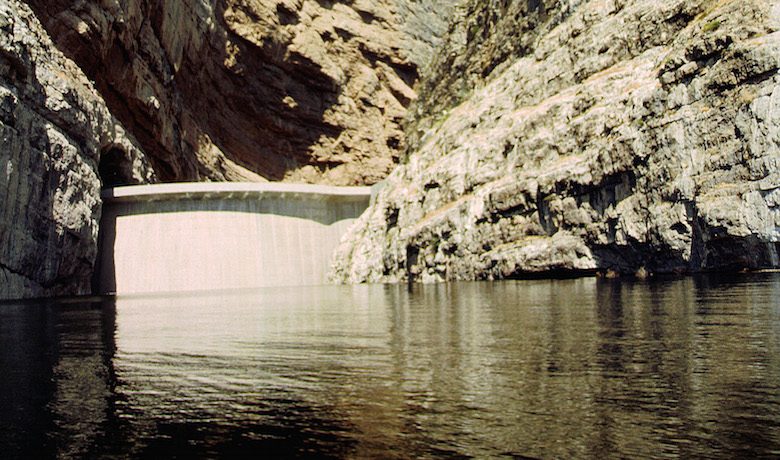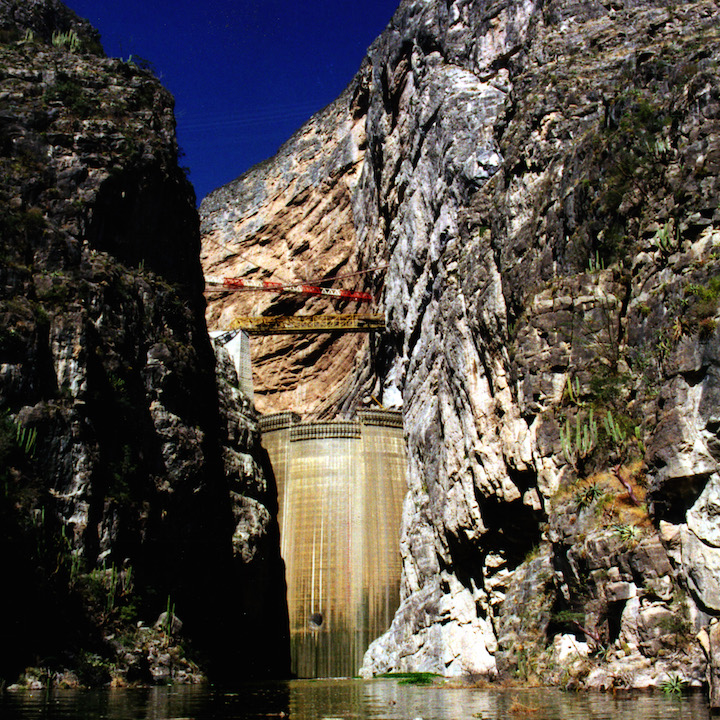TECHNIQUE
The characteristic feature of this project was that it was an excavation site. Excavated using traditional methods (hammer, blasting, excavators), the project includes 4.3 million m3 of excavation for only 600,000 m3 of concrete.
Sealing was ensured by building a waterproof layer on each side of the dam, and below the level of the riverbed. The sealing layer was implemented with a set of deep drilling operations on surfaces running from the dam crest to 60 or 70 metres below the riverbed.
Boreholes measuring 2 inches in diameter were made from a series of tunnels 3 metres in diameter that also served as access tunnels for machinery and workers. The holes were close enough to one another so that a cement slurry could be injected afterwards to seal up the cracks and fissures (slurry pressure-injected). Beforehand, rock permeability tests had been conducted and others were periodically redone as the injections progressed. The design of the waterproof layer for the Zimapán dam consists of two open arms over 100 metres wide on each side of the dam.
Thanks to the vertical and radial boreholes, the injections joined to form a membrane from the surface. Four levels of access tunnels were built for the injections and drainage, because the evacuation of water reaching the membrane had to be planned for in order to avoid pressure being applied to the waterproof layer. Lastly, the worksite was protected by an upstream earth and rockfill cofferdam measuring 25 metres high and a downstream cofferdam 18 metres high.











